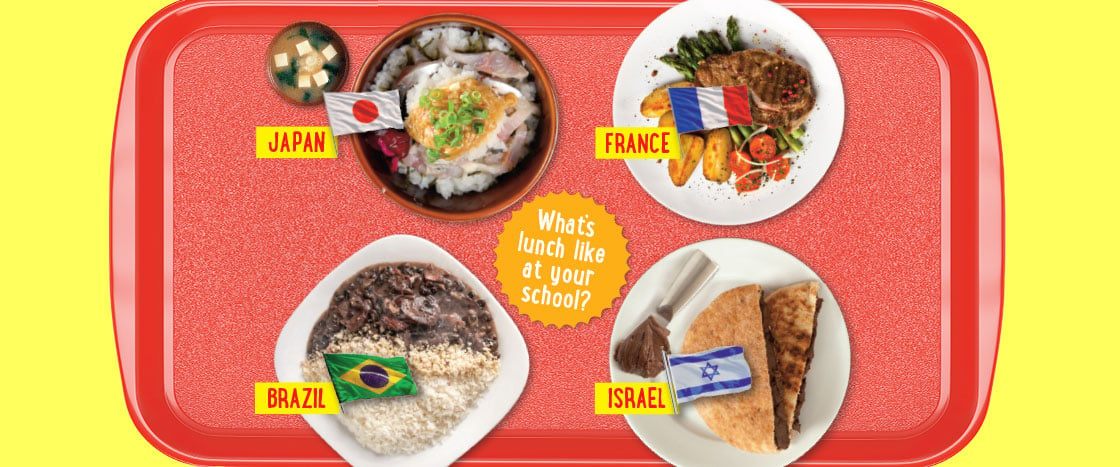Students in Japan take turns serving their classmates lunch—and sometimes cooking it too. A typical lunch includes rice, fish or meat, vegetables, and soup. While students eat, teachers often share lessons about nutrition or manners.

Around the World with School Lunches
How kids around the globe chow down at school
Standards
imagenavi/Getty Images (Miso Soup); iStockPhoto/Getty Images (Sashimi); Bianca Alexis Photo (Chocolate Sandwich); Shutterstock.com (All Other Images)
Click on this infographic to make it bigger!
Japan
France
Eating slowly and enjoying your food are important in France. That’s why schools set aside up to one hour for lunch. This gives students time to enjoy a meal that includes a main dish with a side of vegetables, cheese and bread, and dessert.
Brazil
A law in Brazil requires that at least 30 percent of school lunch ingredients, such as rice, beans, and tomatoes, come from local family farms. This helps support farmers, and students get to learn where their food comes from.
Israel
In Israel, school days are shorter than in the U.S., so most kids go home to eat lunch. During the school day, there is a break around 10 a.m. when students have a snack. One popular choice? Pita bread with chocolate spread.
Write to Win
Imagine you want to bring some globally inspired ideas to your school cafeteria. Write a speech to convince school leaders to make at least two changes to your school lunch, based on what you read above. Send it to “Lunch Contest” by April 1, 2022. Five winners will each receive a Storyworks prize. See page 2 for details. Visit the Storyworks Contests page for more information.
This infographic was originally published in the February 2022 issue.
1. Reading and Discussing
Project the infographic as students follow along in their magazines.
Prompt students to use the headline, subhead, and central image to identify the topic of the infographic.
Ask: Is the purpose of the infographic to
- explain something to you?
- convince you of something?
- tell you how to do something?
Have students look over the labels and images surrounding the central image. Ask:
- How are they related to the central image? (They provide details about the main idea.)
Break students into groups to read each section of the infographic and discuss what they find interesting, surprising, or convincing.
Come back together as a class and ask volunteers to summarize the main idea and supporting details from the infographic.
2. Writing
Preview the writing prompt in the “Write to Win” box.
Download and distribute the guided-writing activity that goes along with the infographic.
Have students respond to the writing prompt. If you wish, send their responses to our infographic contest.
3. Ideas to Engage and Inspire
Have students create their own infographics! Download our “Make Your Own Infographic” activity from Storyworks Digital.
